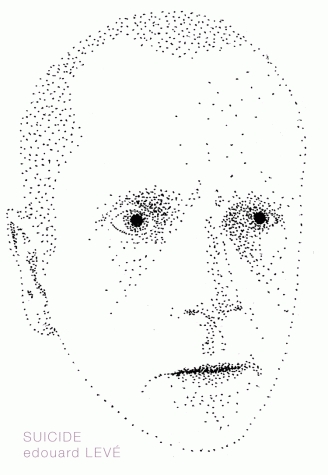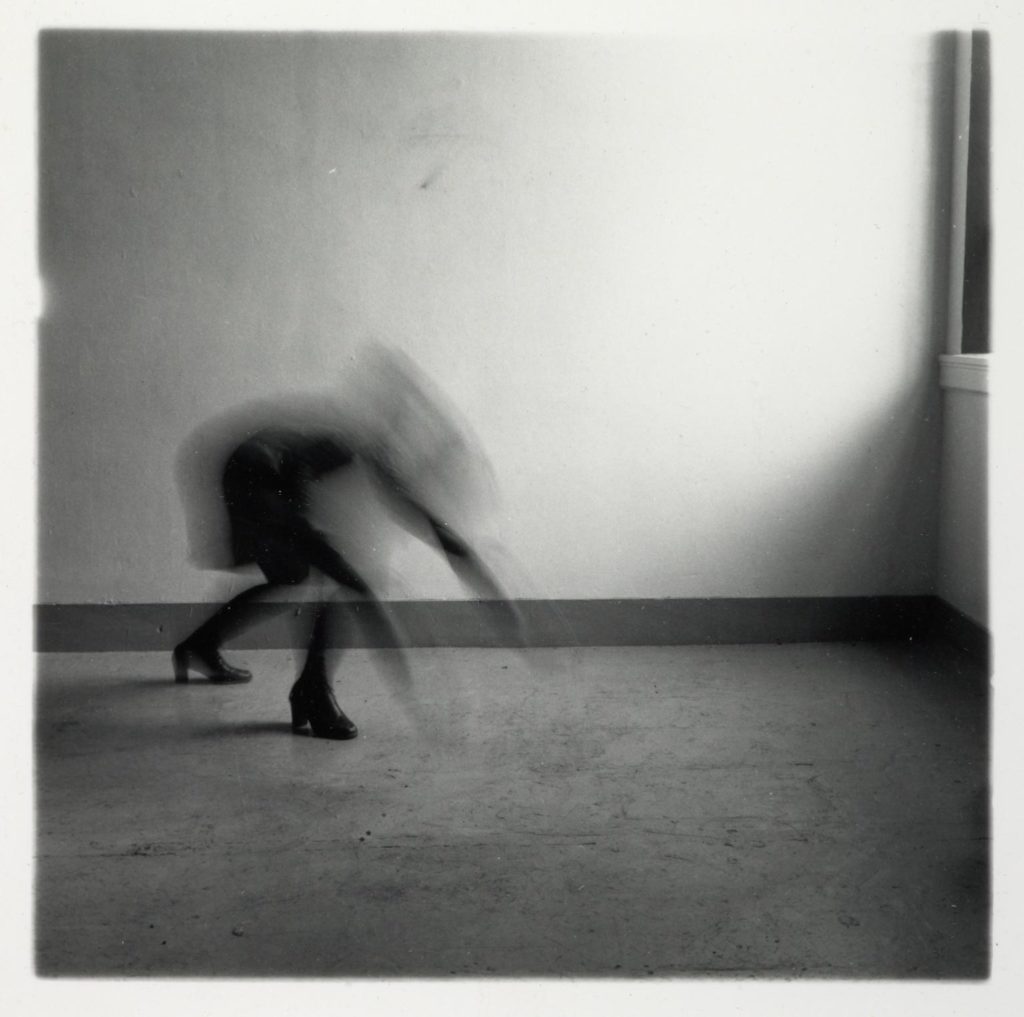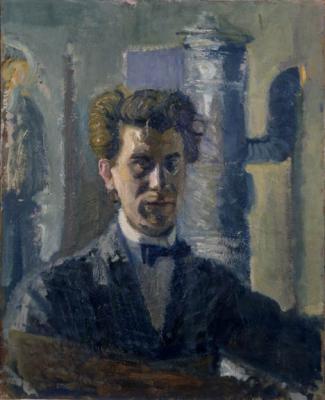Changes in Looking: Suicide and Artistic Legacy
by William Davie
By William Davie
On October 15, 2007, Édouard Levé hanged himself in his Paris studio. He was 42-years-old. He left behind a body of work consisting of a number of highly engaging and conceptually rigorous photographic series and four experimental books; the manuscript for the last delivered just ten days before his death.

In this manuscript entitled Suicide, now published by Dalkey Archive Press, the story’s narrator looks back at the suicide of his childhood friend at 25-years-old, referred to throughout only as “you.” The narrator laments, delivering recollections and anecdotes that build a skewed portrait of “you,” but fails to gain any closure, instead, opening the event up to even greater speculation and anguish. Meanwhile for the reader, with Levé’s suicide lingering, it becomes impossible not to infer that the “you” is in fact an “I”—Levé.
This raises an interesting question: are we, the viewers and critics, able to separate knowledge of an artist’s suicide when viewing and talking about their work, and if not, how does this effect it?
“Isn’t it peculiar” ruminates the narrator, “how this final gesture inverts your biography? I’ve never heard a single person since your death, tell your life’s story starting at the beginning.”1
This sobering realization exemplifies Levé’s pre-empted insight on how his suicide might recontextualize his life and work, forever intertwining them. This gesture of inversion also poses an answer to the first question, which I believe to be true: that, by the very nature and repercussions of the act, it is impossible to divorce ourselves completely from the knowledge of an artist’s suicide when looking at, reading, or discussing their work.
The effects however, of are more open to interpretation, remaining for the most part fluid and subject to various outside forces. But on the whole, I will place them into one of two categories.
The first is when an artist has become mythicized and their suicide plays a vital role in eliciting validation as a “tortured genius,” such as Van Gogh. This is a well-developed stereotype, which as it becomes more common in popular culture’s vernacular, presents a danger in standardizing it as a response when an artist commits suicide, perhaps even making it aspirational.
The second occurs when this mythologizing has not yet been established, or at least not in such a pronounced way, often where the artist has not received wide-spread career recognition, such as Levé.
The two exist in tandem, meaning an artist’s legacy, if they are relatively unknown at the time of their death, morphs if and when an onset of recognition begins to build. Van Gogh’s is a prime example. His work was largely dismissed during his lifetime but has since come to be a household name that at same time embodies the “tortured genius” myth.
In a similar fashion, Francesca Woodman’s legacy has steadily transitioned from the second category to where it is now verging on the first since her suicide in 1981. “There are people whose attraction to Francesca’s work is bound up with their sense of her tragic story,” her father has said, “and without the tragic story they might not be so interested in the work.”2

When I first saw her works, I felt that her suicide at only 22-years-old had arguably left her photographs entrenched in an arena of adolescent curiosity. There is often a restless energy as a result of the captured light in her works, which reignites a similar adolescent restlessness inside of me. But there is no-doubt in my mind that my judgement is consequential of how her biography was often written about when I first became interested in her work. Had I become interested in her work immediately after her death and at a time when there was less influence of skewed details, my reading of her work would be somewhat different.
The more I looked, the more I found myself trying to picture how her work may have evolved along various points of her mid- and late-career arc. Yet, the fact that they do not have the ability to be measured like this is precisely why they are appealing; they have not been diluted as part of larger artistic development.
If Woodman had also produced other series, all of these would have to be considered when we examine her biography. If they were well received, it would reinforce the myth of a “tortured genius.” If they weren’t, she might be seen as something of a one hit wonder, which is where Levé falls. In particular, it is his suicide and the subsequent release of Suicide that brought him his widest recognition and his earlier works, now defined in its shadow, are unjustly not considered of the same calibre.
In both examples suicide was instrumental in each artist gaining wider recognition. As a result, like Levé predicted, this is what becomes both the access point and point of departure when discussing their work.
A condensed version highlighting the mechanics at work when a narrative looks set to transition from category two to one can be seen in the retrospective of Austrian painter Richard Gerstl, which took place at the Neue Galerie in New York in 2017, whereby the exhibition looked poised to re-establish the artist who committed suicide in 1908, in the present.
The press release reads: “The longstanding secrecy surrounding Gerstl’s dramatic and untimely suicide at the age of 25, and the scandalous love affair that preceded his death, only further magnify the legend.”3 In essence, this provides a qualifiable and easily accessible framework for the audience—a prodigious artist, who lived fast, died young, and that, in spite of a limited artistic output, “his groundbreaking style is central to the development of the Expressionist movement of fin-de-siècle Vienna.”4

The result was that even before I entered the exhibition, these suggested parameters in which audiences should view his paintings, with his suicide as the point of departure, were already heavily dictating how I approached and read his pieces, rather than allowing for objective consideration. This can be seen in reviews of the exhibition, too.
“It is difficult not to wonder how the course of modern art might have been altered had he lived a long and productive life,” wrote Will Fenstermaker for The Brooklyn Rail.
“The blotted faces put me in mind of Francis Bacon.” wrote Alex Ross for The New Yorker. “If Gerstl had continued in this vein, he might have changed the course of European art.”
I quickly found myself reflecting on the plausibility of these speculative assertions, asking: to what extent are they indebted to Gerstl’s suicide, safeguarded by the fact that we could never know if they are right or not?
Both Woodman’s and Gerstl’s legacies are symptomatic of the increasingly information-saturated art industry—industry being the operative word—and the arbitrary factors that coalesce to form the hierarchy that it is built upon.
They exemplify part of the underlying mechanics necessary for a gallery or museum to remain relevant and likewise for an artist or their estate to remain relevant, which currently means presence—visually through exhibitions, both commercial and in institutional, written and if possible, collected. As an unintended consequence, and to an extent unseen before, with the onset of the internet, the more a biography is cited and reworked for critical appraisal, the higher the risk is that it is picked apart and mutated over time by different lines of inquiry. Where suicide has taken place, there runs an added risk of knee-jerk categorization.
The Gerstl exhibition was a one-off in a private museum with no outright commercial aspect, and therefore less to capitalize on long-term. But this changes when there is a strong commercial factor like with Woodman or Belgian painter Ilse D’Hollander, who committed suicide at 29-years-old in 1997, and who remains at present, an artist firmly in the second category. Her estate’s future, currently managed by Sean Kelly Gallery, New York, and Victoria Miro Gallery, London, is set to be an interesting navigation through the hierarchy of the industry, where her suicide may unintentionally play an increasingly visible role in her biography.
What caught my attention after seeing her first posthumous exhibition at Victoria Miro Gallery was what Laura Cummings wrote in her review for the Guardian:
“The paintings she left defy such melancholy thoughts. Small, calm and balanced, these landscapes are exceptionally beautiful. Whatever was going on in her life does not seem to have been happening in her art.”5
But I beg to differ. I think it is unavoidable. I think, that, like me, having known she committed suicide, one cannot help but search her sparse landscapes—absent of any figures and seeming as if they are about to dissolve into abstraction at any moment—without thinking about it. Perhaps, even so far as to try and find signs as to what was to come, even her choice of colour, muted pastel tones, feels like it has the potential to be loaded.
But how much of my opinion is derived as a result of me knowing about her suicide before I saw her work? Are her empty landscapes sullen and poignant because I know that she will end her life, or are they actually sullen and poignant or am I, as a product of my culture, too influenced by her narrative and therefore not able to see the works clearly for what they are? I ask myself, if she had she not committed suicide, what language would I use to describe these works? But this seems futile, for she did commit suicide and its presence is I think, unavoidable.

It is the same whenever I come across a painting by Niholas de Staël, who committed suicide in 1955 when he was 41-years-old. It would be easy to dismiss this as morbid curiosity, but pertinent to this is knowledge of a letter de Staël wrote to his mother when he was 22, 19 years prior to his suicide. In it he tells her there are several things she must know about painting, but never explains why she must know them. They are: Why Van Gogh committed suicide, why Delacroix died furious with himself, and why Franz Hals became a desperate alcoholic.
But if we are to agree with him, that to understand what he thought of as the great painters was on a fundamental level, an understanding of their pain, then did de Staël know, or hope, his suicide would incur similar cross-examinations of his oeuvre after his death? It’s a difficult-if-troubling line of question that is also raised by Levé’s death and the content of Suicide.
There is little question as to the prominence of suicide within a biography when it appears. Yet, when considering suicide and artistic legacy what becomes apparent more than anything else is the fragility and susceptibility of the narrative, most notably when there is a strong commercial factor. At which point, the narrative which is made readily available, is hostage to the throws of the cultural climate. There too exists within the critics and viewers, in the current climate, a need for more gripping, stand-out narratives. We only need to look at the proliferations of films and documentaries on murderers and serial killers that, through sleek and punctual editing and bite-size condensing of the stories, accelerate the way in which such events are made palatable—transforming them from factual mediations into escapist entertainment, distorting and eventually it seems, nullifying the commonalities and the language we use around them. And where suicide and artistic legacy is concerned there already exists a powerful strain of this: the myth of the “tortured genius.”
This essay comprises a series of essays in progress, Changes in Looking, by author William Davie. An earlier published iteration in Issue 08 of THE SEEN may be found here.
- Levé, Édouard, ‘Suicide,’ Dalkey Archive Press, Champaign, Illinois, United States, 2011
- Sooke, Alastair, ‘Francesca Woodman: eerie visions from a life cut short,’ The Telegraph, 16 November, 2010
- Press release for the exhibition: Richard Gerstl, at the Neue Galerie, New York, June 29 – September 25, 2017
- Ibid.
- Cummings, Laura, ‘Ilse D’Hollander; Fiona Tan: Elsewhere – review,’ The Guardian, 18 November, 2018